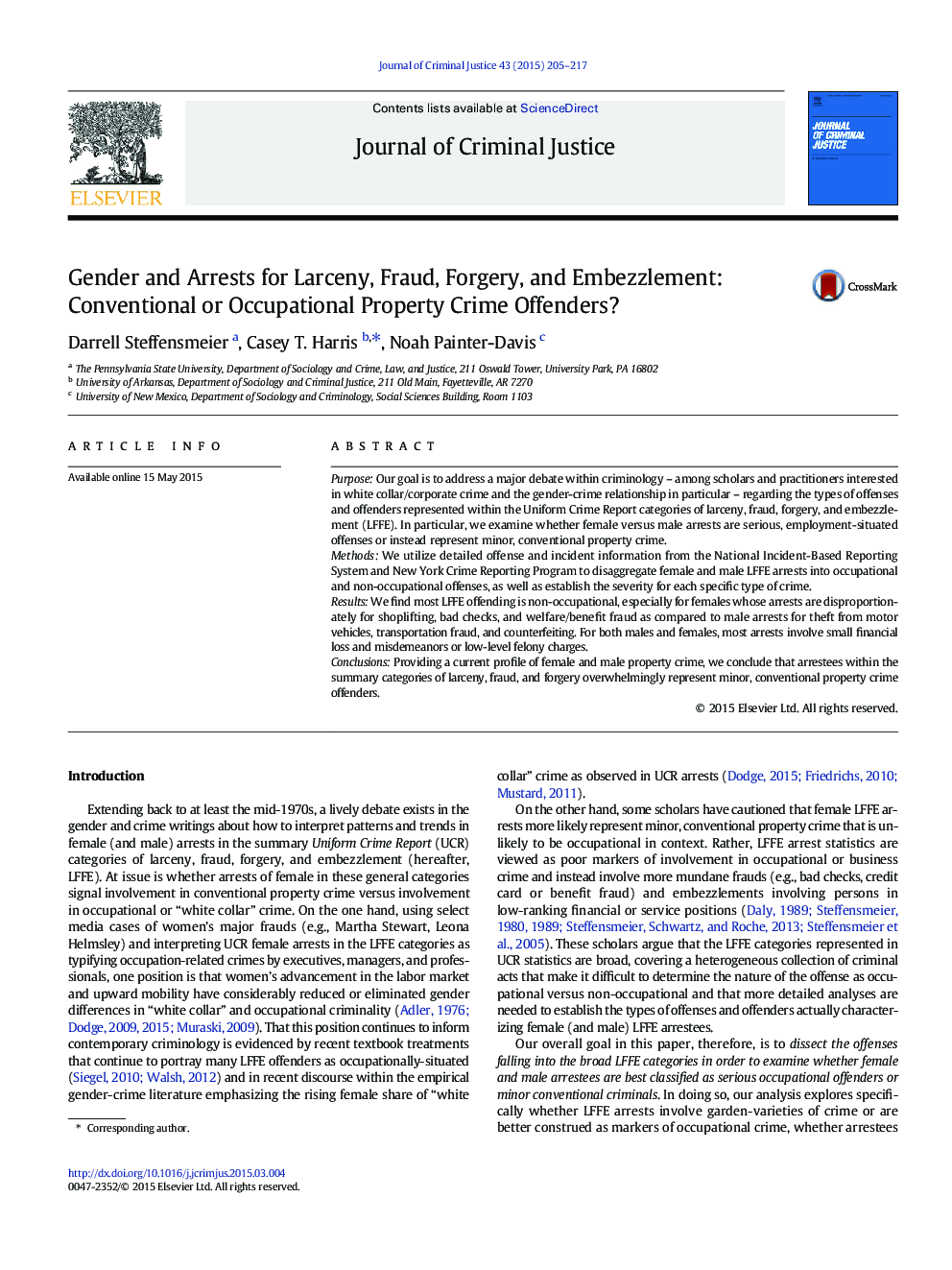| Article ID | Journal | Published Year | Pages | File Type |
|---|---|---|---|---|
| 882658 | Journal of Criminal Justice | 2015 | 13 Pages |
•We examine characteristics of larceny, fraud, forgery, and embezzlement arrests.•Using unique data, we distinguish occupational and non-occupational offenses by gender.•Most arrests are non-occupational, especially for females.•For both males and females, most arrests involved minor offending with little loss.
PurposeOur goal is to address a major debate within criminology – among scholars and practitioners interested in white collar/corporate crime and the gender-crime relationship in particular – regarding the types of offenses and offenders represented within the Uniform Crime Report categories of larceny, fraud, forgery, and embezzlement (LFFE). In particular, we examine whether female versus male arrests are serious, employment-situated offenses or instead represent minor, conventional property crime.MethodsWe utilize detailed offense and incident information from the National Incident-Based Reporting System and New York Crime Reporting Program to disaggregate female and male LFFE arrests into occupational and non-occupational offenses, as well as establish the severity for each specific type of crime.ResultsWe find most LFFE offending is non-occupational, especially for females whose arrests are disproportionately for shoplifting, bad checks, and welfare/benefit fraud as compared to male arrests for theft from motor vehicles, transportation fraud, and counterfeiting. For both males and females, most arrests involve small financial loss and misdemeanors or low-level felony charges.ConclusionsProviding a current profile of female and male property crime, we conclude that arrestees within the summary categories of larceny, fraud, and forgery overwhelmingly represent minor, conventional property crime offenders.
